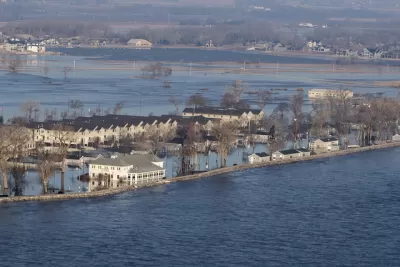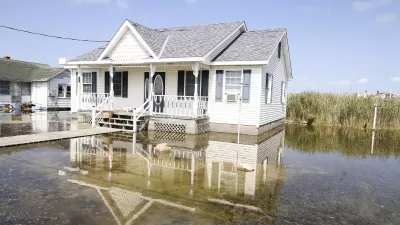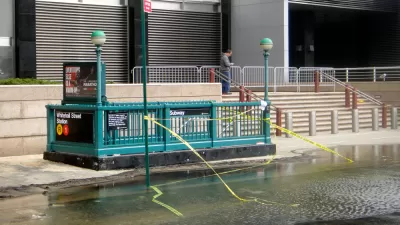The floodwaters still haven't subsided in parts of the Midwest, and lessons about climate change, extreme weather and proactive planning are badly needed to avoid similar catastrophes in the future.

Marshall Shepherd convened a panel of experts to examine lessons from the flooding that has ravaged the Midwest over the past week. Here's the lineup of experts:
- Brian Bledsoe, University of Georgia Athletic Association Professor of Resilient Infrastructure.
- Barb Mayes-Boustead, National Weather Service Meteorologist Instructor.
- Forbes Tompkins, Officer, Flood Prepared Communities, The Pew Charitable Trusts.
- Witold F. Krajewski, Rose & Joseph Summers Chair in Water Resources Engineering and Director, Iowa Flood Center.
- Mike Chesterfield, Director of Weather Presentation, The Weather Channel.
- Ken Dewey, Regional Climatologist, University of Nebraska.
- Steve Bowen, Director and Meteorologist, Aon.
Among the big points made in the analysis reported by Shepherd: the bomb cyclone was a "perfect storm" in its confluence of tragic events; other environmental factors played a role, like snowpack; and infrastructure played a role:
Most of the panel agreed that a combination of weather, water, climate, and infrastructure failure led to the disaster. Mayes-Bousted paraphrased a message from the U.S. Army Corp of Engineers that "all of the engineering around the Missouri River and its tributaries is designed to keep the majority of floods at bay, but not the most extreme of events."
In addition to discussion on other aspects of the disaster, the panel also made recommendations for how to move forward and better prepare for future extreme weather events. The state of Iowa's response to floods in 2008 is offered as one example to emulate.
A separate article by Gabriel H. Sanchez provides a photo series to illustrate the extent of the devastation.
FULL STORY: Four Lessons From 'Bomb Cyclone' Flooding In The Great Plains

Planetizen Federal Action Tracker
A weekly monitor of how Trump’s orders and actions are impacting planners and planning in America.

Congressman Proposes Bill to Rename DC Metro “Trump Train”
The Make Autorail Great Again Act would withhold federal funding to the system until the Washington Metropolitan Area Transit Authority (WMATA), rebrands as the Washington Metropolitan Authority for Greater Access (WMAGA).

The Simple Legislative Tool Transforming Vacant Downtowns
In California, Michigan and Georgia, an easy win is bringing dollars — and delight — back to city centers.

The States Losing Rural Delivery Rooms at an Alarming Pace
In some states, as few as 9% of rural hospitals still deliver babies. As a result, rising pre-term births, no adequate pre-term care and "harrowing" close calls are a growing reality.

The Small South Asian Republic Going all in on EVs
Thanks to one simple policy change less than five years ago, 65% of new cars in this Himalayan country are now electric.

DC Backpedals on Bike Lane Protection, Swaps Barriers for Paint
Citing aesthetic concerns, the city is removing the concrete barriers and flexposts that once separated Arizona Avenue cyclists from motor vehicles.
Urban Design for Planners 1: Software Tools
This six-course series explores essential urban design concepts using open source software and equips planners with the tools they need to participate fully in the urban design process.
Planning for Universal Design
Learn the tools for implementing Universal Design in planning regulations.
Smith Gee Studio
City of Charlotte
City of Camden Redevelopment Agency
City of Astoria
Transportation Research & Education Center (TREC) at Portland State University
US High Speed Rail Association
City of Camden Redevelopment Agency
Municipality of Princeton (NJ)





























